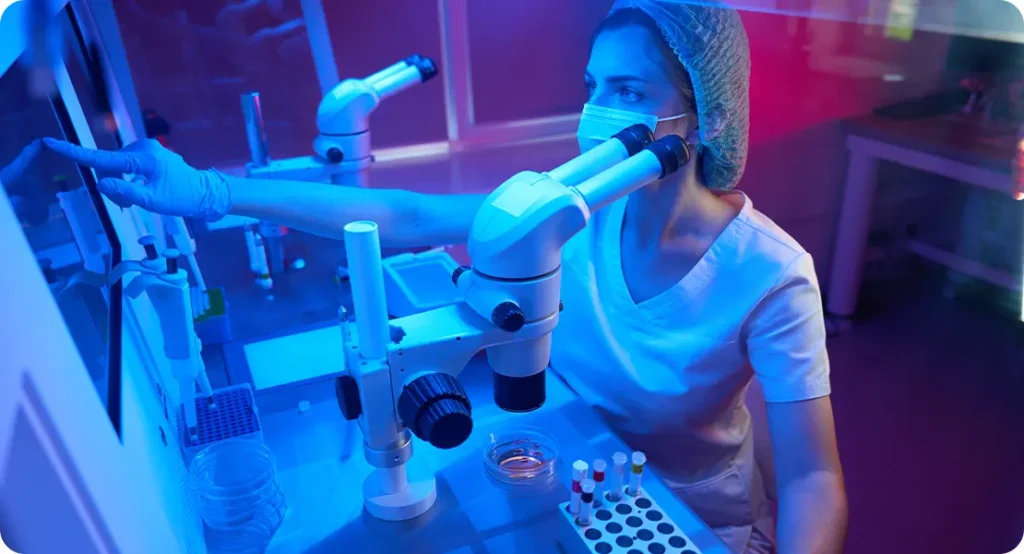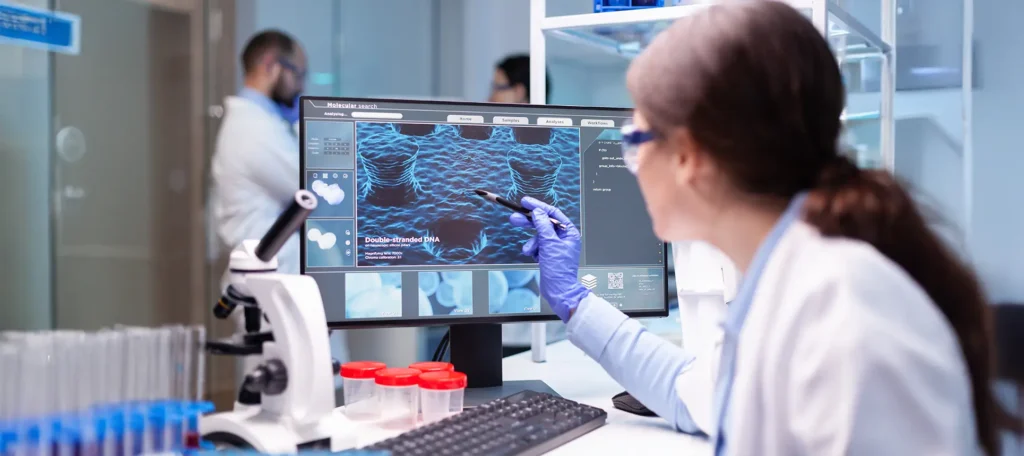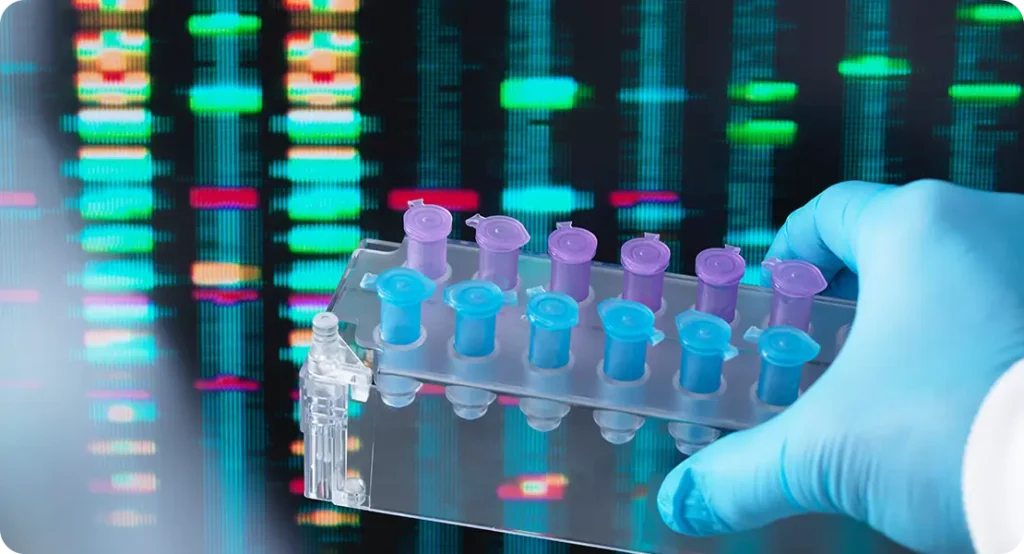When you think of cataract treatment, surgery probably comes to mind. For decades, cataract surgery has been the go-to solution once the lens becomes cloudy. And to be fair, it’s one of the most successful procedures in modern medicine. But what if we could stop cataracts before they reached the point of needing surgery? What if we could treat the problem at a microscopic level—literally?
That’s where nanotechnology comes in. This isn’t science fiction—it’s science in progress. Nanotechnology, or nanomedicine when applied to health, is changing the way we think about eye care. It’s being explored as a tool for delivering drugs directly to the lens, slowing down or even reversing the progression of cataracts without ever picking up a scalpel.
Let’s explore how this exciting field is shaping the future of cataract treatment—and what it might mean for you or your loved ones.
Understanding Cataracts: Why the Lens Clouds Over
Before diving into nanotech, it’s important to understand what we’re up against. A cataract is the clouding of the eye’s natural lens. It develops slowly over time, and while it’s most commonly age-related, factors like UV exposure, diabetes, trauma, smoking, and certain medications (like corticosteroids) can all contribute.
The lens is made mostly of water and proteins. When those proteins begin to break down or clump together, they scatter light rather than focusing it properly. The result? Blurred vision, faded colours, glare at night—everything becomes just a bit harder to see.
Currently, no medication can stop or reverse this process. Once vision loss interferes with daily life, surgery becomes the only option. But what if we could treat the lens before things get that far?
What is Nanotechnology?
Let’s simplify the term. Nanotechnology refers to materials and devices that operate on the scale of nanometres—one-billionth of a metre. These are particles so tiny they can interact with structures inside your cells. It sounds unbelievable, but scientists are learning how to engineer these particles to deliver medicines with pinpoint precision.
In medicine, nanotech has already shown promise in cancer treatment, wound healing, and targeted drug delivery. Now, researchers are bringing this precision to the eye—one of the most complex and delicate organs in the body.
Why the Eye is Ideal for Nanomedicine
You might think delivering drugs to the eye is easy—after all, we have eye drops, right? Unfortunately, most eye drops don’t get very far. The eye has its own protective barriers that prevent substances from penetrating deep inside, especially into the lens.
This is where nanotechnology shines. Nano-carriers—tiny, engineered particles—can be designed to pass through these barriers and reach areas conventional medicine can’t touch. Once they’re there, they can release drugs slowly and precisely where they’re needed, minimising side effects and increasing effectiveness.

For cataracts, this could mean delivering antioxidants, enzymes, or gene therapies right to the lens, where they can stop the clouding process in its tracks.
Nanoparticles for Drug Delivery to the Lens
One of the most promising uses of nanotechnology in cataract care is drug delivery. Scientists are exploring different types of nanoparticles to carry medication directly to the lens. Some of the most talked-about types include:
- Liposomes: These are tiny spheres made of the same material as cell membranes. They can carry both water-loving and fat-loving drugs, making them versatile.
- Polymeric nanoparticles: These are made from biodegradable materials and can be programmed to release their drug load slowly over time.
- Dendrimers: These are tree-like molecules with branches that can hold drugs and target them to specific tissues.
- Nanoemulsions: These can increase the solubility of drugs and enhance their absorption into the eye.
Using these delivery systems, researchers hope to transport substances like glutathione (a powerful antioxidant), lanosterol (a compound shown to reverse protein aggregation in animal studies), or even gene-editing tools directly to the affected part of the lens.
Tackling the Root Cause: Protein Aggregation
At the core of cataract formation is the issue of protein aggregation. Over time, the lens proteins lose their stability and begin to clump together, disrupting the clarity of the lens. Traditional treatments can’t do much to reverse this, but nanotechnology might.
Certain nanoparticles can be engineered to carry “chaperone” molecules—agents that help proteins fold correctly or break down misfolded ones. Others may carry enzymes or compounds like lanosterol, which in some animal studies has shown the potential to dissolve clumped proteins and restore lens transparency.
While we’re still in early stages, these findings suggest that in the future, cataracts might be treatable not just symptomatically, but at the molecular level.
Delaying Progression Without Surgery
Imagine going to the optician and hearing that, yes, you have early-stage cataracts—but instead of waiting until it gets worse and scheduling surgery, you start a course of nanodrop therapy. That’s the dream.
Some labs are already working on eye drop formulations that include nanoparticles loaded with therapeutic agents. These are being designed to deliver sustained doses of antioxidants, stabilising agents, or protein-disaggregation compounds to the lens.
Clinical trials are still in early stages, but animal studies have shown encouraging results. If these therapies translate to humans, they could delay the need for surgery by years—or potentially prevent it altogether in some cases.
Challenges to Overcome
Of course, no new technology is without its hurdles. When it comes to nanomedicine for cataracts, researchers face several challenges:
- Safety: The eye is incredibly delicate. Any new treatment must be proven to be completely safe, with no toxic effects on vision or eye structures.
- Regulation: Regulatory bodies like the MHRA in the UK or the FDA in the US require extensive clinical testing before approving any new drugs or delivery systems.
- Stability: Nanoparticles must remain stable during storage and application. They also need to release their payloads in a controlled, predictable way.
- Manufacturing: Producing nanoparticles consistently and cost-effectively on a large scale is still a work in progress.
Despite these challenges, the pace of innovation is impressive. As materials science, pharmacology, and ophthalmology continue to collaborate, progress is moving steadily forward.
Potential Role in Post-Surgery Recovery
Even after successful cataract surgery, the recovery period can bring its own set of challenges. The eye is vulnerable in the days and weeks following the procedure, with inflammation, swelling, and potential infection being the main concerns. Traditional post-operative care typically involves a strict regimen of eye drops containing steroids and antibiotics, which can be cumbersome for patients—especially the elderly, who may struggle with correct application. This is where nanotechnology could step in to simplify and improve the recovery process.
Researchers are developing nano-formulated eye drops that encapsulate anti-inflammatory and antimicrobial agents within nanocarriers. These specially engineered nanoparticles are designed to penetrate deeper into the eye’s tissues and release their contents in a controlled and sustained manner. This not only enhances drug absorption but also means fewer applications are needed throughout the day. The added precision could significantly reduce the risk of side effects and improve compliance among patients, leading to smoother recoveries and fewer complications.

Another fascinating direction involves using nanotechnology to accelerate healing at the cellular level. Some nanocarriers are being explored as vehicles for growth factors and regenerative compounds, which could actively stimulate repair in the surgical wound site. This is particularly relevant in patients with slower healing rates, such as those with diabetes or autoimmune conditions. These innovations might also reduce the incidence of long-term post-surgical issues, like dry eye or discomfort due to residual inflammation.
One complication of cataract surgery that frequently arises months or years later is posterior capsule opacification (PCO), often referred to as a “secondary cataract.” Here too, nanotech could offer a preventive strategy. Scientists are investigating nanoparticle-based agents that might be applied at the time of surgery to inhibit the cellular changes that cause PCO. If successful, this would reduce the future need for YAG laser capsulotomy, which is currently the standard treatment for this condition. In the future, nanomedicine might ensure not only a faster recovery but also a more enduring result from cataract surgery.
What About Gene Therapy?
The concept of gene therapy might sound like something out of a science fiction novel, but it’s increasingly becoming part of real-world medicine—and cataracts could be a future target. Some individuals are genetically predisposed to develop cataracts earlier in life due to inherited mutations in lens proteins. Traditional medicine can’t do much to address this root cause, but nanotechnology could provide a pathway to target and correct these defects before they result in significant vision loss.
Nanoparticles are now being explored as delivery vehicles for gene-editing tools such as CRISPR-Cas9. These tiny carriers can be programmed to enter specific cells within the lens and either repair the faulty gene or silence its harmful effects. Because the lens is enclosed and relatively static, it’s actually an attractive site for stable gene editing. If researchers can refine these techniques, it could lead to long-term prevention of cataracts in those who are most at risk—even from birth.
Delivery is one of the greatest obstacles in gene therapy. The eye’s natural barriers make it difficult for large molecules like DNA and RNA to reach their targets. However, certain nanoparticles—especially those made from biodegradable polymers or lipid-based structures—can protect genetic material from degradation and ferry it across these barriers. Once inside, they release their payload in a highly localised way, reducing the chance of unintended effects on surrounding tissues.

Though this research is still largely in the preclinical stage, some early animal studies have shown promise in using nanocarriers to correct or modify lens protein production. The long-term dream is a one-time treatment—possibly even delivered as an eye drop—that alters the course of the disease before it progresses. If successful, gene therapy via nanotechnology could shift cataract care from reactive to preventive, reducing reliance on surgery altogether for certain genetic types of cataracts.
Is This Science Fiction or Future Fact?
It’s completely understandable to ask whether all this talk about nanotechnology and gene therapy is grounded in reality. After all, cataract surgery is already safe, effective, and widely available—so why fix what isn’t broken? The truth is, these innovations aren’t being developed to replace cataract surgery tomorrow, but to improve and expand the range of options we have. And many of them are closer to reality than you might expect.
Nano-formulations are already in clinical trials for a range of eye diseases, including glaucoma, dry eye disease, and macular degeneration. These trials are providing the data needed to establish safety, effectiveness, and dosage guidelines for nanomedicine in the eye. While cataract-specific trials are less advanced, the same principles of targeted drug delivery and enhanced absorption are likely to apply. Once proven safe in related conditions, it’s only a matter of time before similar formulations are adapted for cataract use.
The international scientific community is heavily invested in this field. In the UK, researchers at institutions such as UCL and Oxford are contributing to collaborative studies, while in the US, large-scale grants are being awarded for nanotech in ophthalmology. Asia is also making strides, with teams in Japan and China publishing compelling research on nano-based eye drops and lens regeneration therapies. This kind of global momentum suggests that clinical translation is not a matter of “if” but “when.”
It’s fair to say we’re still several years away from walking into a clinic and receiving nanomedicine-based treatment for cataracts. Regulatory approval, production standardisation, and large-scale human trials are all steps that still need to be completed. But calling it science fiction would be short-sighted. What we’re seeing is a steadily advancing frontier—one that’s backed by real-world science, substantial investment, and growing clinical interest. The next decade could bring transformative changes in how we approach cataract prevention and care.
The Ethical Angle
It’s also important to consider the ethical implications. Who will have access to these technologies? Will they be affordable, or only available privately? How will they be regulated to ensure patient safety?
As with any breakthrough, there’s a risk of hype outpacing reality. That’s why careful, transparent development and international collaboration will be key to making sure this field benefits everyone—not just a lucky few.
What It Could Mean for You
If you’re someone with a family history of cataracts, or you’re already noticing early signs, nanomedicine might one day offer an alternative path. While you shouldn’t skip your regular eye checks or ignore advice from your optometrist or ophthalmologist, it’s reassuring to know that science is working on better options.
Even if you eventually need surgery, you may benefit from nano-based therapies that improve outcomes, shorten recovery time, or reduce the risk of secondary complications.
Final Thoughts: Keep an Eye on the Future
The idea of treating cataracts without surgery may sound too good to be true—but science is getting closer. Nanotechnology is already transforming other areas of medicine, and the eye is proving to be a fertile ground for innovation.
If you’re excited by the possibility of safer, earlier, and less invasive treatment for cataracts, you’re not alone. Patients, doctors, and researchers alike are watching this space closely. In the next decade, we may see a major shift in how we approach one of the world’s most common vision problems.

So stay informed, keep up with the latest research, and never be afraid to ask your eye specialist about new developments. The future of cataract treatment may be smaller than ever—but its potential is huge.
References
- Zhang, L., Zheng, Y., Chow, A.H.L. and Wang, Y., 2018. Nanotechnology in ocular drug delivery: therapeutics and toxicology. Frontiers in Pharmacology, 9, p.121.
Available at: https://www.frontiersin.org/articles/10.3389/fphar.2018.00121/full - Gupta, H., Aqil, M., Khar, R.K., Ali, A., Bhatnagar, A. and Mittal, G., 2009. Nanoparticles laden in situ gel for sustained ocular drug delivery. Journal of Pharmacy and Pharmacology, 61(12), pp.1391–1398.
- Kwon, Y.J., James, E., Shastri, V.P. and Yeh, T.K., 2021. CRISPR-based gene editing for ocular diseases: therapeutic potential and delivery challenges. Pharmaceutical Research, 38(2), pp.125–138.
- Gaudana, R., Ananthula, H.K., Parenky, A. and Mitra, A.K., 2010. Ocular drug delivery. The AAPS Journal, 12(3), pp.348–360.
- Sahoo, S.K., Parveen, S. and Panda, J.J., 2007. The present and future of nanotechnology in human health care. Nanomedicine: Nanotechnology, Biology and Medicine, 3(1), pp.20–31.

